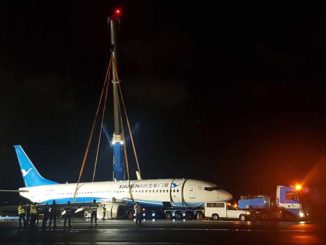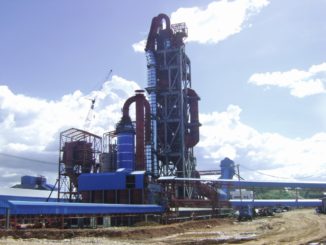
Jimmy Bautista’s focus on his vision remains as sharp as his skills as a financial whiz kid. The president of flag carrier Philippine Airlines wants it to be a five-star airline or among the best of the world’s best by 2020. That’s three years from today.
To be in the league of global carriers like Emirates, Qatar, Singapore Airlines, Cathay Pacific, Asiana, ANA, and even Garuda, however, Asia’s first airline needs to do a lot of homework.
First, PAL must improve service—online, on the ground, and in flight. That is quite easy, given the Filipino’s natural warmth, hospitality, caring nature, and sense of service. Thus, it is no surprising PAL’s slogan has changed, from Asia’s First, to “the airline with a heart.” Accordingly, PAL has enhanced its Mabuhay Miles priority passenger club and introduced a new Premium Economy on its major jets.
The flag carrier has unveiled its reconfigured A330s that will have 309 seats, configured into Business Class, Premium and Regular Economy.
PAL has taken away more than 100 seats from eight all-economy A330s to make the cabin more spacious. The reconfigured A330s will have all new seats and a new in-flight entertainment system.
Second, PAL must improve its fleet. Again, PAL is on track. By end-2017, the carrier will have 87 aircraft, most of them brand new. That will rise to 96 by 2021.
In the second half of 2017, PAL gets two Boeing 777-300ER for long-haul flights like London and US cities San Francisco and Los Angeles, and five next-generation Bombardier Q-400s for short hops island to island.
PAL will have a new flagship aircraft, the much-awaited twin-engine A350-900. Six are coming, delivered during 2018 and 2019. Another six 350-900s are an option. The A350 can fly non-stop from Manila to New York, crossing over the polar region. PAL will phase out 18 old aircraft and secure 27 brand new planes until 2021.
The third strategy is a little tricky. PAL must improve its home base, the Ninoy Aquino International Airport, which is now bursting at the seams. It is operating beyond its capacity, of 30 million passengers a year. With their fleet expansion, PAL and rival Cebu Pacific could handle already 50 million passengers a year, if given the space. Where will they service that many passengers?
Since 1999, PAL has been operating out of the Naia Terminal 2, brand new under President Estrada. Naia 2, however, is now overcrowded. Terminal 2 had bad toilets. They are now maintained by PAL. Terminal 2 had broken escalators. The airport management ordered new parts. Departing passengers have to sit on the floor waiting for flights, for lack of space.
Meanwhile, PAL has shifted arrivals of its US-originating flights to Terminal 1 and its Middle East flights to Terminal 3. Still, PAL feels constrained. It needs to expand— expand big and urgently. PAL will increase its passenger volume by one million passengers a year over the next five years, or from 15 million today to 20 million.
“The Philippines is five years behind in building its airports,” winces Bautista.\
PAL wants to build a new terminal building at the old 8.9-hectare Nayong Pilipino at a cost of P20 billion.
Under president Ramon Ang, in 2014, PAL got a contract to lease from state gambling firm Pagcor the sprawling facility as parking for its wide-body jets, for 20 years, until 2033, at only P40 per square meter. Pagcor now balks at this seemingly low rate and wants to play hardball.
Says PAL: “The existing contract between PAL and Pagcor is legal, valid and based on the terms negotiated by both parties three years ago.” PAL thus expects Pagcor to respect the terms of this contract.
Asks Bautista: “If we can’t get all the runway and the terminal slots needed at Naia, how can we build our scheduled ‘banks’ of flights that will connect smoothly so we can bring tourists from London to Boracay, or from New Zealand to Bohol?” “PAL wants to decongest Naia while stimulating air travel in the Philippines,” he says.
Southeast Asia is the most dynamic global market for air travel today. International passenger growth is 10 percent per year for the last three years. The trend will continue.
In Asean, fastest growing is Vietnam tourism. It is not that Vietnam is a better place to visit than the Philippines. The Hanoi government is simply focused on tourism and has been expanding facilities rapidly. You know the Vietnamese. They wanted to be the world’s No. 1 rice exporter. They did it. They wanted to be the world’s No. 1 coffee exporter. They did it. They want to be the No. 1 in tourism. They have done it.
Also growing faster than the Philippines are such relatively unknown countries before as Cambodia and Laos. Very soon, with just a single attraction, the temples of Angkor Wat, Cambodia will have more arrivals than the Philippines. In fact, if you remove Balikbayans as among our foreign tourists, Cambodia arrivals and Philippine arrivals are now at par.
Because of infra constraints and congestion at Naia, our main airport, the Philippines and PAL cannot grow as fast we want to. The secret of tourism growth is airports, not tourist attractions. Tourists make do with tourist attractions in their natural state. But they hate bad airports.
Tourists travel not really to look for resorts or tourist attractions, but simply for the heck of traveling. That is why good airports are essential. Airports are the first part of travel experience.
Naia is a bad airport. For at least a couple of years, it was rated the worst airport in the world, even without reckoning with the laglag-bala (bullet planting) racket (where passengers were extorted money allegedly for having a bullet or bullets in their luggage) under the BS Aquino administration.
It’s a pity because the best way to earn foreign exchange is not to borrow or lure foreign investors. It is tourism. Each tourist spends on average $1,200 when he visits the Philippines, which is really more fun to visit.



